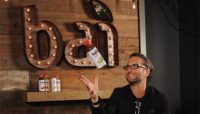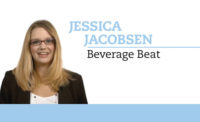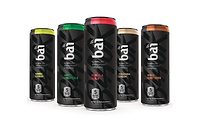Bai Brands’ fruitful growth
Bai beverages take coffee fruit to new heights


|
With about 20 years of experience in the industry, Ben Weiss has learned a lot about the coffee business, and particularly about the outer fruit of the coffee bean. Weiss’ knowledge of the coffee fruit as well as his appreciation for the Asia-Pacific region led to the launch of Bai Brands, Princeton, N.J., which offers a collection of beverages that are infused with coffee fruit.
The climate, equatorial sun and volcanic soil contribute to what makes coffees from the Asia-Pacific region special, and the same can be said for the coffee fruit.
“The coffee fruit contains that same magic, and that secret was yet untold in the form of a ready-to-drink beverage because it had previously been used in cosmetics for its anti-aging qualities, but I just knew it was a matter of time before the secret got out,” says Weiss, Bai Brands’ president and chief executive officer. “And being a fan of healthy beverages that are nourished by nature, I set out to harness those antioxidant wonders from the coffee fruit and I infused it into this thirst-quenching beverage that we now call Bai.”
Weiss understands that many consumers are unaware of coffee fruit.
“Most people don’t know that coffee is a fruit and that’s what I call our ‘A-ha’ moment that we offer our consumers,” he says. He explains that the products are positioned to allow consumers to discover that on their own.
“It really delivers on that ‘A-ha’ moment and as a result, the product responds really well to word of mouth marketing, which as you can imagine in this industry can really separate you from other brands.”
The antioxidants derived from the coffee fruit play a part in the product’s name, he says.
“Bai stands for ‘pure’ in Mandarin, so it’s pure taste, pure energy and pure antioxidant goodness [and] much like the brand itself, there’s more meaning to the name,” Weiss says. “We also consider it an acronym for botanical antioxidant infusion; the real cool part is it’s a pun on words. It’s the by-product of the coffee harvest because we use the fruit of the coffee bean, which typically gets thrown away.”
Catering to consumers
Bai’s products are each named after a different coffee growing region, Weiss says, such as Tanzania Strawberry or Sumatra Dragonfruit.
“Every one of the flavors pays homage to a coffee- growing region, and we like to say our flavors are single origin,” he says. “We don’t concoct mixed flavors like a pomegranate blueberry. We try to keep them single origin so the flavors come through and that’s pretty much the influence.”
Bai Brands also addresses the lower-calorie category with its Bai5 lineup, which was released about six months after Bai’s original lineup launched. Bai5 varieties contain 5 calories and are sweetened with organic stevia and erythritol, while Bai products are sweetened with organic evaporated cane juice. The company differentiates between the two brands with red caps for Bai5 and black caps for Bai.
“Our Bai5 lineup outsells our Bai lineup three to one,” Weiss says. “Within that lineup, our popular sellers are Sumatra Dragonfruit and Panama Peach. On the Bai side, Jamaica Blueberry is our No. 2 SKU overall. So we have some strong flavors on the traditional side, but what makes Bai5 so special and potentially iconic is its ability to deliver everything Bai does with the 5 calories and no off-notes or artificial aftertaste from a 100 percent natural product, so we’re excited about that.”
The company also recently added to the Bai5 offerings with Bai5 in glass bottles. Three new flavors are available in glass packaging instead of the line’s original PET options.
“Bai5 glass is obviously an extension of Bai5 and we wanted everyone to be able to have it, so we decided to create a glass package that would accommodate those retailers that do not carry PET — think of a hotel, a restaurant or a bar,” Weiss says. “And we know that some consumers prefer enjoying beverages out of glass bottles, so we’re happy to offer both options.”
The Bai5 glass flavors are Ipanema Pomegranate, Togo Tangerine and Indonesia Nashi Pear. “Ipanema Pomegranate, in my opinion, could be one of our best flavors,” Weiss says. “We are actually going to be introducing that one in PET just because we want to get that into distribution as soon as possible. We’re also taking some of our traditional lines and our good sellers, like Jamaica Blueberry, and formulating that into a Bai5 variety, as well as our Mango Kauai. We’ve got some exciting things coming in the very near future.”
Sourcing its roots
The company sources all of its coffee fruit from Indonesia, Weiss says.
“Coffees that are from Sumatra, New Guinea, Sulawesi and Java, those coffees from those regions like Indonesia, which is where we get all of our coffee fruit from, they’re distinctively bold and full-bodied and they, more importantly, are really indicative of the flavors from that part of the earth,” he says.
The company works with local people in the region who grow and harvest the fruit. They work directly with the local farmers, creating another source of revenue for them because the product typically would be discarded or used for compost, Weiss says. Bai Brands works with a leading technology-driven company in Asia for the botanical extraction, which is done in Indonesia because the product is very perishable, he adds.
Bai’s products are packed with antioxidants. All drinks contain 4,000 oxygen radical absorbance capacity (ORAC) units, based on testing from Brunswick Labs. ORAC is a method used by the U.S. Department of Agriculture to measure antioxidant power in foods and beverages, Weiss says.
“We determine [that] flavor meets function at 4,000 ORAC,” he says. “That’s where we can maintain drinkability and product integrity. We actually call it ORAC 4k. We could standardize that to anything, but we really are proud of where the product resides from a drinkability, functionality and flavor perspective. For us, it’s the perfect marriage of those three components, those three pillars of the brand.”
Expanding its scope
Although Bai is predominately available in the New England, Northeast and Mid-Atlantic regions, the company is expanding its distribution, Weiss says.
“Our distribution strategy over the past two years has been to align ourselves with quality DSD distributors,” Weiss says.
The company has expanded distribution in the Southeast with Florida, and in September it expanded west with Orange County, Calif., San Diego, and parts of Los Angeles, Weiss adds. Bai also has distribution in Hawaii.
“There is some chain activation but with young brands we feel like the opportunity is really up and down the street, in the cooler, not sold in grocery warm by the case,” he says. “We just don’t think we’re a mature enough brand and we don’t have that type of awareness with the consumer that we would get traction there, so we have a sales force of 30 full-time people who support our distributors and our DSD distribution strategy and every day they’re out there getting in those stores. We do a ton of demoing, a ton of sampling and we’re being very guerilla in our effort. We have some big plans in the future in 2012, but for right now that’s our approach.” BI
Looking for a reprint of this article?
From high-res PDFs to custom plaques, order your copy today!







